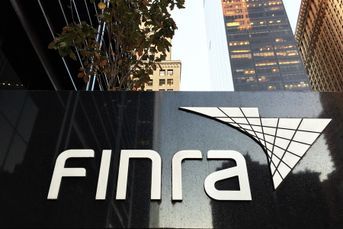Are easy days of RIA financing a thing of the past?

Financial advisors may be dragged through the muck when financing goes wrong.
Financial advisors often are whipsawed, through no fault of their own, by the dealings of the institutions they work for or do business with.
Just look back a little more than a year ago when First Republic Bank was sold to JPMorgan Chase & Co. after a $100 billion run on the bank in March during last year’s banking crisis.
About 200 financial advisors and their teams were dragged through that mess, although the wealth management group that First Republic had steadily built for more than a decade was not directly connected to the banking business.
It’s a story as old as Wall Street. A financial institution like a bank or insurance company creates a strategy to drive growth. It backfires eventually, the firm shuts down or is sold, clients wonder if their money is safe and financial advisors deal with the reputational risk generated by the debacle.
Right now, financing the decade-long red hot mergers and acquisition market for registered investment advisors is looking less rosy and much more expensive than in some time. Interest rates are up substantially, with bank financing to do RIA deals doubling right now to 10%, according to industry sources, from 4% to 5% a few years ago when interest rates were hovering near zero.
Meanwhile, some large RIA buyers, think the private-equity backed aggregators, are sick and tired of what they see as overpaying for assets of RIAs, which are difficult at times to integrate into streamlined, high-profit businesses.
And perhaps another large bump in the road for the RIA market is in the commercial real estate market. Hundreds of billions of dollars of commercial real estate mortgages are held at midsized banks around the United States, the same banks that often underwrite loans that RIAs use to buy other firms.
More than $900 billion of outstanding commercial mortgages is expected to come due this year, according to reports earlier this year. Will those borrowers default?
According to a report published this month by Florida Atlantic University, more than 60 of the largest banks in the country are at increased risk of failure due to their commercial real estate exposures, and 67 banks have exposure to commercial real estate greater than 300% of their total equity.
One of those banks is Live Oak Bank, according to the report. Live Oak targets RIAs to generate new loans and also is a well-known presence at a variety of leading industry conferences for the wealth management industry.
“Our dedicated investment advisory lending team offers a variety of financing options for acquiring a business, transitioning ownership, refinancing existing business debt, or even buying a building, including conventional financing,” according to the bank’s website. “We are a true partner, ready to support you each step of the way with the best financing options for your unique needs. Our investment advisor loans are as varied as your opportunities.”
Should financial advisors and RIAs be concerned with any potential fallout from Live Oak’s commercial real estate mortgage portfolio?
“The report does not address the fact that our real estate is tied to owner occupied small businesses, which is very different than the struggles seen with large office buildings in downtown markets,” said Michael Cairns, head of credit, Live Oak Bank. “And that’s the real estate that is causing issues for investor. Forty-five percent of our real estate is covered with a Small Business Administration guarantee.”
“What happens if a bank’s real estate portfolio blows up, and how does that effect the rest of its business,” asked one senior industry executive, who spoke confidentially to InvestmentNews because of the sensitivity of the topic. “What happens to the loans to the RIAs?”
The answer to that question is not clear, but what’s apparent is that the days of easy living for financing RIA mergers appears to be over. The RIA market is in flux, and no one knows where interest rates will eventually land.
Bad commercial real estate loans could hurt midsized, regional banks, many of whom are either lenders to RIAs or aspire to be. As discussed, financial advisors often are dragged through the muck when financing goes wrong.
More high net worth investors exploring alternatives for non-correlation, diversification
Learn more about reprints and licensing for this article.







